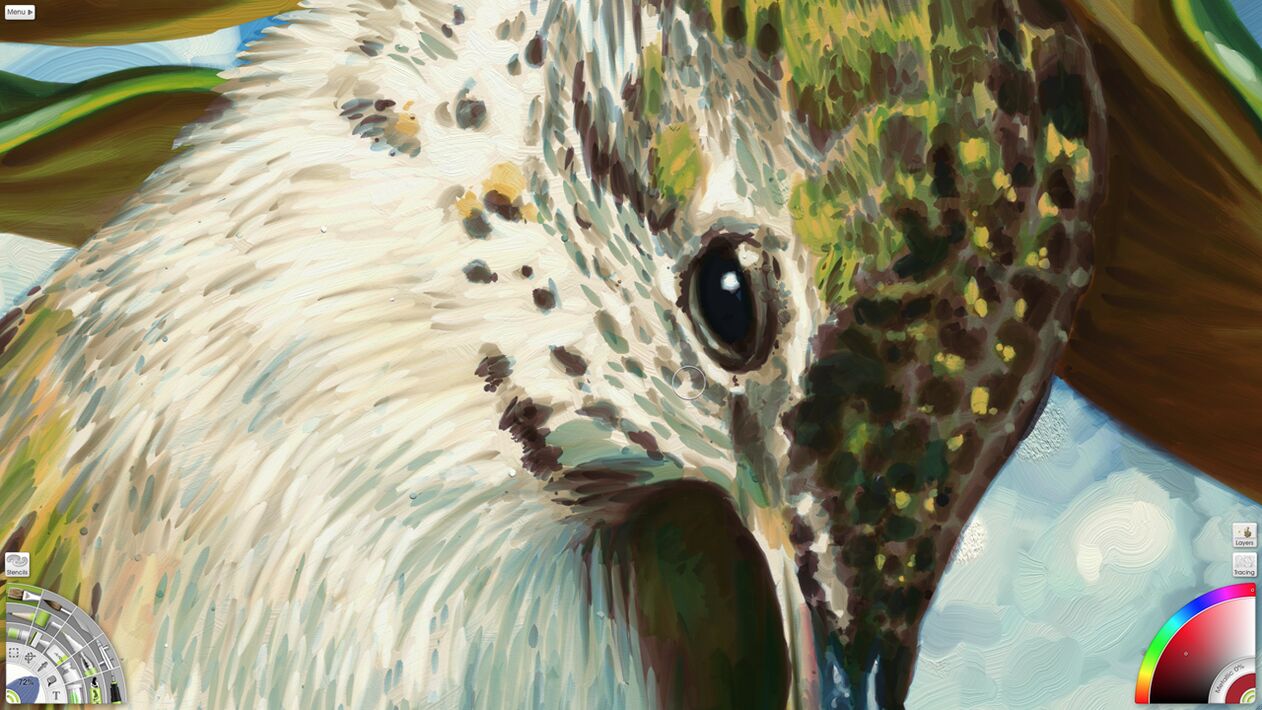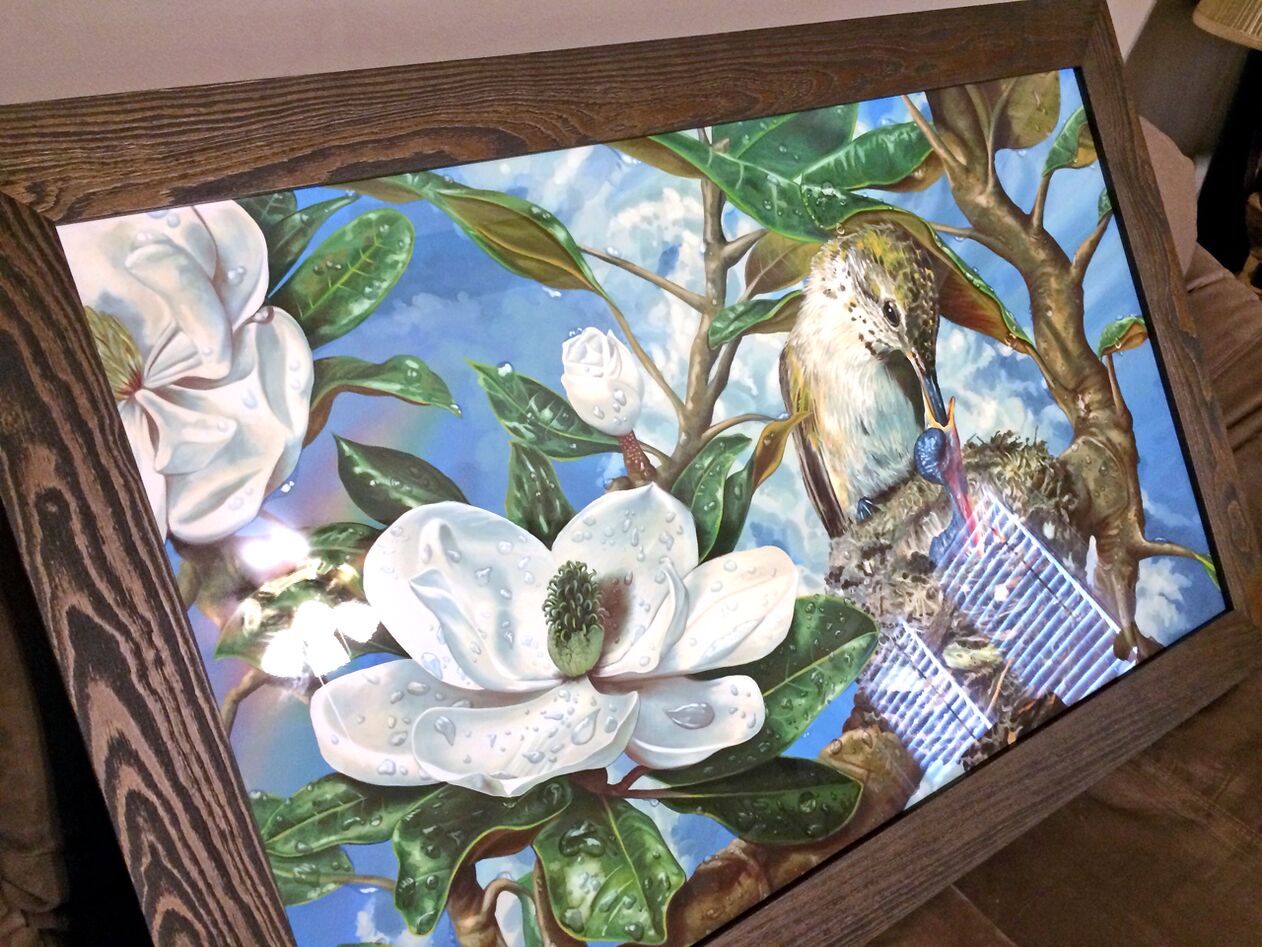Post Pluviam

When inaugurating this weblog — or portfolio if preferred — I stated that my intentions were to update it infrequently and only when I had new work to showcase; now the time has come to at last reveal something fresh.
In the months since relaunching this website I have been in the process of signing away my freedom and perhaps also my soul to a bank in exchange for a house I may, with their permission and regular payments, call my own. Some in my country might call this experience the “American Dream”, but I find the debt involved to be asphyxiating sometimes — especially when I’ve lived so long with so little red ink in my ledger. When compared with my previous rental there is in my new one an abundance of wall space for paintings and other hangable trinkets. We already have quite the bounty of paintings to hang up with the majority of the artwork’s being collections of oil landscapes, pastel drawings, and pencil and charcoal compositions either by my sister or myself. It is indeed quite mad to add yet another one to the pile here, but I have.
My mother has grumbled at me for quite a few years now about the subject matter of my illustrations as she doesn’t find fart clouds, shirtless fat old men, rednecks with extremely poor hygiene, and the large pointy pearly whites of drooling monsters to be appropriate subject matter for art. These perhaps aren’t the breed of material one customarily finds in traditional art, but I find them funny and entertaining to paint. I have, however, wanted to paint something she would enjoy for a while, but it took me a while to come up with something that wasn’t the usual old boring landscape painting or still life.
The title of the piece — “Post Pluviam” — is Latin, and it is translated into English simply as “After the Rain”. The painting is of a mother ruby-throated hummingbird’s feeding her newborn chick while perched on her nest in a southern magnolia tree. The scene takes place after a brief shower, and a faint rainbow is discernible in the distance on the left side of the composition. The ruby-throated hummingbird has a fondness for magnolia trees not for the nectar from its blossoms but instead as a location to make nests. Both that species of hummingbird and the magnolia grandiflora are native to where I live in my part of North Louisiana, and they’re both things my mother has an affinity for herself. Hummingbirds are among the smallest of birds; secondary and tertiary magnolia tree branches aren’t substantial either; so both in this painting are made to look enormous when juxtaposed. I took some artistic license with the magnolia flowers by making them slightly smaller than they most likely would be in a scene like this. I just didn’t want the one in the foreground to overpower the hummingbirds.
Painting Process
I ook very well like a monkey, but I can’t just climb a tree and view this scene. I had to settle for compositing it from various sources — most of them photographs. The magnolias and the branches are from a few trees that were in bloom a few months ago here. The hummingbirds are an amalgamation of different photographs, none of them in quite the angle I wanted. The mother’s general appearance is from a photograph I took about seven years ago using a new DSLR I received then. Photos are difficult reference material when painting because photographs as amazing as they are aren’t capable of reproducing the full color gamut of the human eye even when using fancy cameras and producing HDR images; shadows and highlights are never correct. Color theory is the trick to counteracting washed out shadows and highlights on a photograph, so prior to beginning on the painting I spent some time studying up more on it. I studied it in college, but a refresher course never hurt anybody. The best source I found when doing my research was a book by James Gurney of Dinotopia fame called Color & Light. His other instructional book, Imaginative Realism, provides direction in painting what isn’t seen in front of one’s eyes. It was acutely helpful to me on this piece and will also in the future due to my fondness for illustrating what doesn’t exist.

I have for quite some time now wanted to be able to paint on the computer using my Wacom tablet and have an application simulate the look and feel of oil paint for me. There have been programs in existence to do that task, but all of them have been clunky, lethargic, and so far from an accurate simulation as to be comical. Corel Painter is the prime example of this. I have downloaded a trial of the application for every version since 6, and every last one of them have been exactly as I described prior; the most recent versions have even been markedly worse. Granted, I do work with large canvases which is most likely the cause of the sluggishness of the program, but if the intent of the program is to mimic natural media and it is incapable of producing an image to be printed at 300 l.p.i. (118.11 l.p.cm) even at medium canvas sizes then what’s the point?
I began on an earlier version of this painting in Photoshop using its very basic “mixer brush”. I’ve never been satisfied with that tool, so I just went looking one day thinking I would try out Sketchbook Pro to see if it didn’t have that ridiculous 6400 pixel image size limit I ran into the last time I tried using the program. It did. I stumbled across ArtRage in a review instead.
It’s mostly what I’ve been looking for. It can accurately simulate oil paint as much as a digital program should. The paint behaves nearly exactly as it would straight out of a tube, and there is even an option to allow the paint to mix on canvas as it would in real life instead of the mathematical algorithm that’s usually done on computers. The color mixing simulation isn’t entirely accurate, but it can’t be because a lot of a paint color’s mixing properties come from its construction and pigments; it is fairly good nonetheless. ArtRage is not without its faults, though. The interface is quite unnecessarily plastic-looking and fisher-pricey which I think doesn’t do a good job at selling the illusion of using natural media. It doesn’t even attempt to follow platform conventions in places where it should, either. For example there is no Preferences menu option in the application menu. It’s not even in the Tools menu as would be expected on Windows. No, it’s in the Edit menu. It is 2013, and the application is still 32-bit. I’ve possessed computers capable of 64-bit instructions for seven years now, and I have a computer with 32GB of memory inside. I should be able to access all the memory I possess especially in a graphics application. There is also no protection in the program from hitting the 4GB memory limit like you would expect. The application behaves erratically and eventually crashes when that occurs. When ArtRage is loaded and the active application, I don’t particularly like that it causes the menu bar and the dock to hide out of view either. That is a great feature to have when needing the screen space or to focus, but it shouldn’t be on by default and unchangeable but instead a view option like it is in Photoshop. This is a computer, after all, and I do sometimes need to multitask. Despite these faults ArtRage is fully capable and is a joy to work in.
Printing & Framing

While I have worked in extremely large sizes for digital paintings for a long time because of the possibility of getting them printed professionally one day, I haven’t done so — until now. I’ve printed Christmas cards before, but I did those myself one year and got them printed by a shit shop the next. I wouldn’t call them professionals. I’m extremely picky when it comes to printing, and I usually prefer to do it myself. However, the print size for this piece is 36″ × 22″ (91.44 cm × 55.88 cm) which is far beyond the the scope of my 13″ × 19″ (33.02 cm × 48.26 cm) inkjet printer. I had no other choice but to have it professionally printed.
After much research I decided to have Post Pluviam printed at Fine Print Imaging in Ft. Collins, Colorado. I first received an 8″ × 10″ (20.32 cm × 25.4 cm) giclée proof of my painting. The final print arrived a week later, so I rushed it off to be framed.
As of this time it hasn’t been hung yet, but it will be shortly.